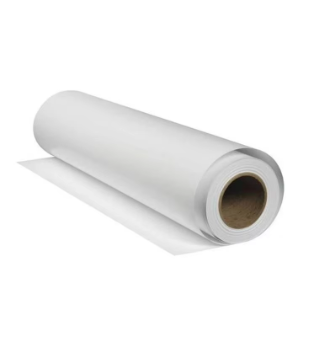Automotive UV Films: Protection and Aesthetic Enhancements
Key Types of Automotive UV Films
There are several kinds of automotive UV films on the market today, each with its own advantages when it comes to keeping out those pesky UV rays, cutting down glare, and looking good too. The main options people go for are tinted, clear, and reflective varieties. Tinted ones give cars that darker look many folks want, they cut glare pretty well and make the inside feel more private, plus they still stop most of the bad UV stuff. Reflective film has this shiny metal look that does an awesome job at keeping heat and glare at bay. Clear films are different though because they don't change how things look inside the car at all but just focus on stopping UV radiation. Some research shows these films can actually block around 99 percent of harmful UV light which helps keep leather seats from cracking and fabrics from fading year after year. Picking the right kind really makes a difference in how comfortable and attractive a car feels overall. Those interested should take a closer look at what kind of UV film would work best for their specific needs.
Benefits for Vehicle Longevity and Appearance
Car owners are starting to line up for automotive UV films because these coatings really do protect both inside and outside surfaces from getting faded or cracked by all that sunlight beating down on them day after day. The dashboard doesn't turn yellow anymore, leather seats stay looking fresh instead of brittle, and those expensive factory finishes on the bodywork last much longer than they would otherwise. People actually save money in the long run since they don't have to keep replacing things like seat covers or dashboard trim that just fall apart from constant sun exposure. Take John from Phoenix for instance he put film on his SUV last summer and now his kids aren't constantly complaining about how hot it gets inside. Real world experience shows these films work wonders at keeping cars looking good while blocking harmful UV rays. Most folks find that once installed, they forget about them until someone comments on how nice everything still looks months later.
Architectural UV Films: Energy Efficiency and Safety
Window Film Varieties for Buildings
There are several kinds of architectural UV films on the market today, each made for different reasons like saving energy, looking good, or keeping people safe. Let's break them down into three main categories: solar control films, decorative ones, and security films that all bring something special to the table. The solar control type works by bouncing back most of what the sun throws at it, cutting down on heat buildup inside buildings. Some studies show this can actually save around 30% on cooling bills during summer months when temperatures spike. Decorative films do double duty they make windows look nicer while still letting light through without revealing everything inside. Think about how office workers want their view but don't want strangers peering in from outside. Lastly there's security film, which basically turns regular glass into something tougher so it doesn't shatter easily if someone tries to break in. All these films help cut down on monthly utility expenses too, especially for big buildings where heating and air conditioning systems work overtime trying to compensate for poor insulation.
Commercial vs. Residential Applications
UV film applications look quite different when we compare commercial versus residential uses, something worth keeping in mind for anyone considering installation. Commercial properties typically prioritize practical benefits like blocking harmful UV rays and improving energy efficiency through better insulation. Residential customers tend to care more about how these films enhance their space visually while still providing protection against sun damage. When it comes to businesses though, there's another layer to consider - regulations matter a lot here. Office buildings need to meet certain certification requirements for safety reasons. Take security films for example; many commercial structures have strict guidelines about what kinds of materials can be used on windows. Looking at real world examples shows just how adaptable UV films really are across industries. Retail stores use them differently than hospitals do, and both approaches work well within their respective environments despite completely different operational demands.
Industrial-Grade UV Films: Durability in Harsh Environments
Heavy-Duty Films for Machinery Protection
Industrial grade UV films get built to handle some pretty tough situations out there. They can take on everything from scorching heat to nasty chemicals that show up around big machines at work sites. What makes these films stand out is how well they resist chemicals and scratches, which keeps important parts of equipment safe from getting worn down or damaged over time. Machines last longer this way, and factories keep running smoothly without unexpected breakdowns. Most manufacturers stick to established industry standards too, so companies know what they're getting when they buy these protective coatings. While no product is completely foolproof, meeting those standards means businesses can feel reasonably confident about spending money on something that will actually protect their valuable machinery investments.
UV Resistance in Manufacturing Settings
UV films are really important in manufacturing settings for protecting both equipment and workers from dangerous UV radiation. When workplaces install these films, they basically cut down on UV exposure which makes the environment much safer overall. Industrial safety professionals often talk about how UV protective films make a big difference in factory operations. They mention things like better production numbers and fewer workplace injuries as real advantages. Looking at actual numbers from various plants shows something interesting happening too. Factories that put these UV protection films into place tend to see drops in accidents caused by UV exposure. This means healthier workers staying on the job longer without interruptions to production schedules. Some facilities even report improvements in employee morale once proper UV protection is implemented across their operations.
Specialty UV Films: Unique Applications and Innovations
Decorative Films for Interior Design
Interior designers are increasingly turning to decorative UV films to spruce up spaces while getting some practical benefits too. These films have become really popular lately for both homes and businesses because they just look amazing when applied to windows or walls. What makes them stand out is that they don't just look good - they actually help with privacy issues without blocking out all the sunlight coming through. We've seen lots of interesting uses recently, especially in office buildings where the films create stunning effects similar to stained glass or those cool frosted patterns that change how light moves around a room. The best part? They come in so many different styles and colors that people can match them exactly to whatever theme they want for their space. For someone trying to get both style and function from their decor choices, these UV films offer something special that regular window treatments simply cant match.
Emerging Technologies in UV Film Solutions
UV film tech is changing fast these days, bringing some really cool new stuff to the table that actually works better than before. We're seeing things like self cleaning films and those anti fog coatings making their mark across different fields where maintenance costs were once a headache. What's interesting is how all these improvements are opening doors to completely new uses in places nobody expected, from car windshields to building facades. When manufacturers start adding nanotechnology into the mix, the results speak for themselves - longer lasting products that block UV rays much more effectively. Most experts agree that going forward, there'll be a big push toward greener materials and smarter features that respond to environmental conditions. The market wants this stuff too, since people care more about sustainability now than ever before. As companies experiment with these advances, we're watching UV films find their way into all sorts of unexpected applications, solving problems that seemed impossible just a few years ago.
FAQ
What are the main benefits of automotive UV films?
Automotive UV films offer UV protection, glare reduction, and enhance privacy while maintaining the aesthetic appeal of the vehicle. They help extend the life of the car's interior and reduce the need for frequent replacements due to sun-induced damage.
How do architectural UV films contribute to energy efficiency?
Architectural UV films, especially solar control films, reduce heat gain and help lower energy costs by reflecting a portion of the sun's energy, leading to savings in HVAC operation.
Why are industrial-grade UV films vital in manufacturing settings?
Industrial-grade UV films protect machinery and personnel from harmful UV radiation, maximizing machine longevity and improving safety, which subsequently enhances productivity.
What role do decorative UV films play in interior design?
Decorative UV films enhance aesthetics by adding artistic elements to the design space while addressing privacy concerns. They can mimic stained glass or frosted patterns, enriching the ambiance.

